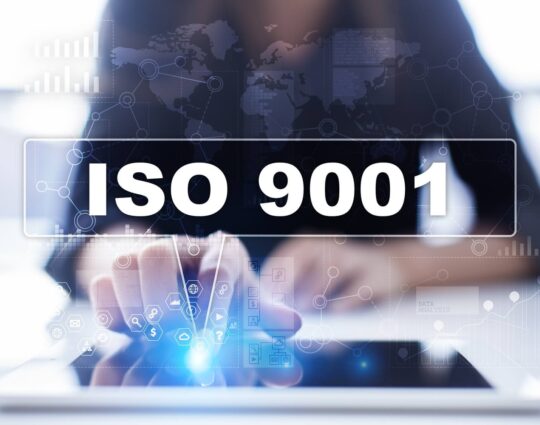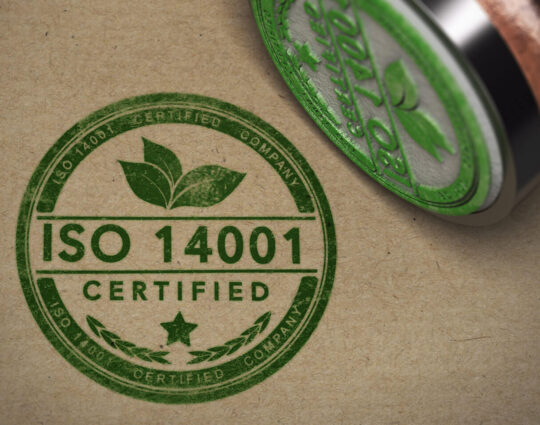The Best ISO Certification Service in Torrance, California (CA)
Contact Us

If you want your organization to be full-proof with little to no chance of failure, then look no further. These standards and certifications will make sure that everything will go your way. Standards conformity and certifications will help ensure that the quality of the products and services you provide conform to society’s or the industry’s standards. Even regulators and the government count on ISO standards to make sure that the regulation is good, thanks to the globally established experts.

The benefits do not just affect you since these standards and certifications will increase the confidence of the consumers/buyers. These are the main standards that we here at IQC ISO Pros offer: ISO 45001, ISO 9001, ISO 14001, ISO 13485, AS9100, IATF 16949, CMMC, and CMMI.

ISO 45001
ISO 45001 is a standard that has its focus on the systems management of Occupational Health and Safety Management or the OHSMS.
This standard has been published in March of 2018, with the goal to decrease occupational injuries and diseases in the workplace. How? – Well by the promotion of physical and mental health, as well as the protection of employees and staff members.
ISO 45001: Why Is It Important?
The International Labor Organization stated that more than 7,600 people die from work-related accidents or diseases every single day. That is why a committee of occupational health and safety experts of the ISO set to work in order to make the International Standard with the potential to save almost three million lives each year.
ISO 45001: When was it proposed?
ISO 45001 was proposed on October 13 at the ISO. The ISO/PC 283 had direct responsibility for the standardization process. It is said that 70 countries helped in the drafting process. OHSAS 18001 (Occupational Health and Safety Assessment Series) was replaced by ISO 450011 over three years after its publication in March of 2018.
ISO 45001: Adoption
As a national standard, ISO 45001 was adopted by Albania, Argentina, Austria, Australia, Belgium, Bolivia, Bosnia and Herzegovina, Brazil, Bulgaria, Canada, Chile, Colombia, Costa Rica, Croatia, the Czech Republic, Denmark, Ecuador, El Salvador, Estonia, Finland, Georgia, Germany, Greece, Honduras, Hungary, India, Ireland, Israel, Italy, Japan, Kazakhstan, Latvia, Lithuania, Malaysia, the Netherlands, New Zealand, North Macedonia, Norway, Paraguay, Peru, the Philippines, Poland, Romania, Serbia, Singapore, Slovakia, Slovenia, South Africa, Sri Lanka, Sweden, Switzerland, Turkey, the United Kingdom, The United States, and Uruguay.

ISO 13485
ISO 13485 is the most widely used international standard for quality management in the medical device industry. It is an effective solution to meet the requirements for a quality management system in the medical device industry. ISO 13485 can go hand in hand with ISO 9001 since they both deal with product quality management systems. However, the difference between ISO 13485 and ISO 9001 is that ISO 9001 requires the company or organization to demonstrate continuous improvement, whereas ISO13845 only requires for the system to be implemented and maintained effectively.
ISO 13485: Why is it important?
ISO 13485 is important because it provides a foundation for manufacturers to demonstrate a commitment to the safety and quality assurance of medical devices. Since the safety and quality of products used in the medical device industry involve the health of the people, then it is not something to be debated.
ISO 13485: When was it proposed?
The first edition of ISO 13485 was first published in 1996 in order to ensure that the quality and services in the medical device industry are properly maintained. It used EN 46001 as its basis for development. The third and latest edition would later then be published in 2016.

CMMC (Cybersecurity Maturity Model Certification)
The Cybersecurity Maturity Model Certification (CMMC) is a standard for the implementation of cybersecurity across the defense industrial base. It was designed and developed by the Department of Defense (DoD) to give a face to the importance of cybersecurity controls in all partners, contractors, and subcontractors that deal with DoD.
CMMC: Why is it important?
The CMMC is important because hacking has become prevalent, especially in US companies’ information networks by foreign nations. The Department of Defense set this up in order for these companies to have a common platform in assessing whether the said company has competent cybersecurity or not. Over time, all DoD contractors will be required to obtain CMMC.
CMMC: When was it proposed?
The US Department of Defense released the Cybersecurity Maturity Model Certification (CMMC) version 1.0 on January 31, 2020.

ISO 9001
ISO 9001 is an ISO standard that dedicates itself to Quality Management Systems (QMS). The latest iteration (ISO 9001:2015) which replaced ISO 9001:2008 was considered as the “beginning of a new era in the development of quality management systems”. It outlines the scheme for quality improvement and understanding for any company or organization that is looking to provide products and services that meet the requirements of the consumers in the most efficient way possible.
ISO 9001: When was it proposed?
ISO 9001 was first published in 1987 (ISO 9001:1987) for companies and organizations that create new products to assure the quality of design, development, production, installation, and service. The new ISO 9001 was published on the 23rd of September 2015. The aim of the standard has not changed; however, in order to allow the standard to integrate more easily with other international management systems standards, the structure and core terms were modified.
ISO 9001: Principles.
- Customer Focus
ISO 9001 is customer-focused which generally means this specific standard aims to satisfy customers by exceeding their expectations.
- Leadership
Ensuring that everything in the organization is managed properly and provides a positive role model.
- Engagement of people
The company or organization must empower its workers to make them more competent and motivated while encouraging every one of them to contribute and help make the company or organization better.
- Continuous Improvement
In order to improve, the company or organization must make new opportunities to its members by doing preventative and corrective actions by focusing on root-cause conditions.
- Process Approach
The company or organization must be part of a unified system that produces consistent and satisfying results and addresses the risks that have an impact on the outcome.
- Evidence-Based Decision Making
The company or organization should not make decisions based on theory and should use statistical evidence as a basis in order to provide effectiveness, efficiency, and greater objectivity to it.
- Relationship Management
The company or organization should always consider their relationship with all the parties they are involved with for them to easily find the opportunities and risks for each.
ISO 9001: Plan Do Check Act Cycle.
The Plan Do Check Act cycle is the operating principle of the ISO’s management system standards. The structure includes processes that examine performance regularly and ensures that the system will continuously provide benefits.
- PLAN
Objectives and processes necessary to deliver results with expected results in mind are established. The target output here is the expected result in mind.
- DO
The plan is implemented, processes are executed, and make the product. The data in doing so should be acquired as it is required in the “Check” and “Act” steps.
- CHECK
Thoroughly analyze the results and compare the actual results to the expected results.
- ACT
Carry out corrective actions on the differences between actual and planned results. Determine whether to apply the changes or not using the data gathered, which will then result in improvement of the process or the product.
ISO 9001: Adoption.
The top 10 countries for ISO 9001 certificates in 2014:
1.) China: 382,401 Certificates
2.) Italy: 168, 960 Certificates
3.) Germany: 55,363 Certificates
4.) Japan: 45, 785
5.) India: 41,016
6.) United Kingdom: 40,200
7.) Spain: 36,005
8.) United States: 33,008
9.) France: 29,122
10.) Australia: 19,731

AS9100
AS9100 is a Quality Management System that is widely adopted and standardized for the aerospace industry. It was released by the Society of Automotive Engineers and the European Association of Aerospace Industries. It is similar to ISO 9001 in regard to its encouragement to continually improve the products and services the company or organization can provide.
AS9100: Why is it important?
AS9100 is important to companies and organizations that are in the aerospace industry because it provides a common policy of assessment and certifications for the manufacturers in the aerospace industry. It helps them provide customers with the best quality products and services. It is designed to encourage organizations in the aerospace industry to continuously improve what they can provide to the customers and exceed their expectations.
AS9100: When was it proposed?
AS9100 was proposed in 1999 in order to ensure the quality and services in the aerospace industry would be continuously improving. It would soon be revised in 2001, 2004, 2009, the latest revision is in 2016.

ISO 14001
ISO 14001 is part of the ISO 14000 family of standards that provide guidelines for organizations that are looking to reduce their negative impact on the environment. The ISO 14001 standard uses an Environmental Management System and is open to all companies and organizations. From an organization that has factories aiming to reduce waste to a company that has the traditional desk jobs aiming to reduce electricity and paper waste.
ISO 14001: Why is it important?
ISO 14001 is important for several reasons. It has become prevalent among businesses because companies yearn to reduce climate change concerns and because of the pressure from environmentalist groups. Companies or organizations will become more efficient in using their resources if their waste is significantly reduced. It can also be thought of as a sign of an improvement if the organization can reduce their waste since every organization is striving to be the best organization they can be.
ISO 14001: When was it proposed?
ISO 14001 was first published in 1996 in order to reduce the impact of businesses in the environment with its first edition. The latest iteration of ISO 14001 was published in 2015.

IATF 16949
IATF 16949 is an ISO technical specification that aims to develop quality management systems that provide for continuous improvement, waste reduction, and defect prevention in the automotive industry supply chain and production. It was prepared by the International Automotive Task Force (IATF) and the Technical Committee of the ISO.
IATF 16949: Why is it important?
IATF 16949 is important to companies and organizations that are in the automotive industry because this standard gave a common policy of assessment and certification for the global manufacturers in the automotive industry. It also ensures that the quality and services that the customers acquire would be of the best quality. It is designed to encourage organizations in the automotive industry to continuously improve what they can provide to the customers and satisfy their every need.
IATF 16949: When was it proposed?
The first edition of the ISO/TS 16949 was published in 1999 by the International Automotive Task Force. The second edition was published in 2002, and the third edition in 2009. The third edition (ISO/TS 16949:2009) would later then be replaced by IATF 16949 in 2016.

CMMI (Capability Maturity Model Integration)
Capability Maturity Model Integration (CMMI) is a process-level improvement training and appraisal program. Originally, CMMI addresses three areas of interest. One is product and service development (CMMI-DEV), the second is service establishment, management (CMMI-SVC) and the third is product and service acquisition (CMMI-ACQ). In version 2.0, all these areas of interest are converted into a single one.
CMMI: Why is it important?
CMMI is important because it is a process model. It maps their process, creates opportunities for improvements, and develops future processes with those improvements in mind. The outcome of doing this will improve aspects of your current organization. Aspects such as increased customer satisfaction, decreased risk, and better productivity and efficiency.
CMMI: When was it published?
The capable Maturity Model (CMM) is the predecessor of CMMI. The CMM was developed from 1987 until 1997. Version 1.1 was released in 2002, version 1.2 was released in August of 2006, and version 1.3 in November 2010.
IQC The ISO Pros can help you implement, train on, consult, and have your company and/or organization certified on the following ISO Certifications:

